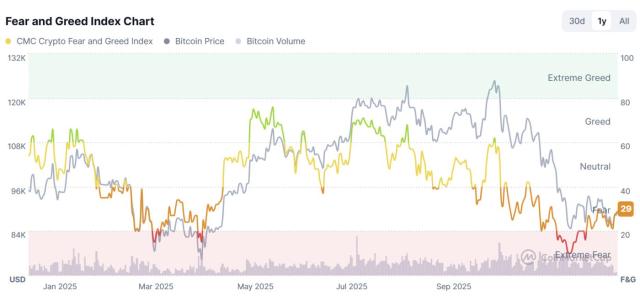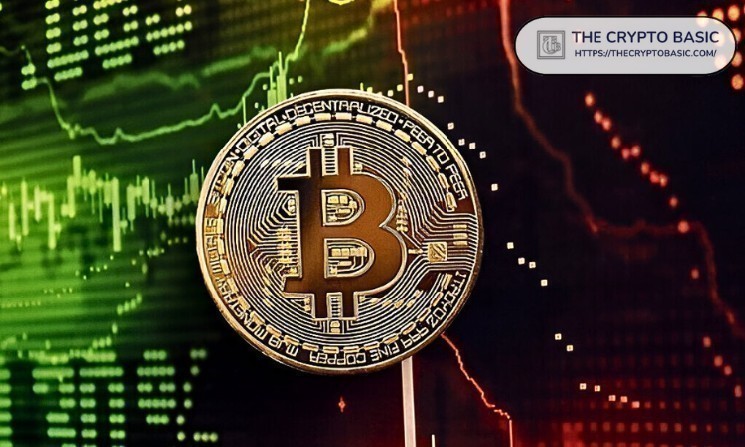
Introduction:
PulseChain is a state-full Hard fork of Ethereum, the first Hard fork to contain the complete state of the Ethereum blockchain, which means it holds a record of every transaction, user account, and smart contract interaction on Ethereum .
The platform aims to reduce computational pressure on the Ethereum blockchain and create a cost-effective alternative for smart contract developers.
PulseCHain aims to increase the value of the Ethereum network by offloading part of the network load and reducing gas costs. Ethereum has a block time of 15 seconds. However, PulseChain has a block time of 12 seconds, which officials say makes it faster and more scalable.
PulseChain uses a fork of Parlia, the Binance Smart Chain (BSC) Proof-of-stake(PoS) consensus mechanism. However, the project has moved to a new Proof-of-Stake Authority (PoSA) consensus model that introduces native validator staking, rotation, and reward-slashing contracts.
As of the publication, PulseChain has 15,893 verification nodes in the entire network. Anyone can become a validator by staking 32,000,000 native PLS tokens. Validators earn a portion of transaction fees from the entire network.
Pulsechain completed the testing of V3 and V4 versions earlier this year, and launched the official version on May 14.
team:
The founder of PulseChain is Richard Heart , who is also the founder of HEX.
RH is an American cryptocurrency entrepreneur who was one of the first large-scale investors back in 2015 when Ethereum raised funds through crowdfunding.
It has hundreds of thousands of fans on Twitter and Youtube, and everyone’s comments on it are mixed. While having a large number of fans, there are also a large number of people who think that the project he is doing is a Ponzi scheme. scoffed.
HEX tokens allow holders to earn nearly 40% annualized returns by locking tokens. The project raised 60 million US dollars on the first day of its release, setting a record for the issuance of blockchain tokens at that time, and HEX increased by a maximum of 10,000 times in 3 years from 19 to 21, making Richard Heart even more fame.
RH is also very good at marketing. He bought a 555.55-gram black diamond with 55 facets to symbolize the maximum pledge period of HEX of 5555 days, and named it "The HEX.COM Diamond", and Sponsored the Daytona 500 race in which JJ Yeley, one of the Triple Crown winners, participated.

HEX:
HEX claims to be the world's first high-interest blockchain certificate of deposit, with a promise of substantial ROI returns for those who join early. A blockchain project that distributes HEX to Bitcoin holders in the form of a snapshot of the Bitcoin UTXO set that appeared at block height 606227 on December 2, 2019 by Richard Heart .
The initial distribution of HEX to Bitcoin holders is 10,000 HEX per 1 BTC. Bitcoin holders can only claim HEX within the first year of issuance. During this period, HEX is obtained by donating ETH by interacting with the HEX smart contract.
At the end of the first year of issuance, all HEX coins not claimed by Bitcoin holders will be distributed to other HEX users with active stake. After the first year of launch, HEX is designed to have a maximum annual inflation rate of 3.69%.
Holders of HEX can stake their tokens for a period of time (1-5555 days), and receive the principal and interest of the investment when the specified period is reached. Users who hold HEX and pledge will encounter inflation. If the pledge is terminated before the set Vesting period, half of the income will be deducted as a penalty.
For example, under the inflation rate of 3.69%, the pledge rate is 10%, then the annualized rate of return of pledgers is 36.9%. HEX has an OA address that holds 90% of the total tokens. People in the community say that this address has never sold a single token in the past 3 years, and HEX has never been hacked.
In addition, the project has also designed a promotion reward mechanism, users who come through referrals will get a 10% reward, and the referrer will get a 20% reward. Later, XEN launched by JACK was also inspired by many HEXs.

AirDrop:
The PulseChain AirDrop will start when the PulseChain blockchain is launched. Anyone with a balance of Ethereum tokens in a non-custodial wallet will receive a 1:1 balance of PLS tokens with no action required, giving users access to all Ethereum tokens on PulseChain. Any ETH held in the non-custodial wallet will be replaced by the PLS balance. However, all ERC-20 tokens will retain their original names.
But this AirDrop has almost no value, more of a gimmick, because the price of PLS at this time is three zeros after the decimal point, and the 1:1 exchange is almost negligible.
mechanism:
Almost all projects on the Pulse network are launched through the Sacrifice activity , which is the donation mechanism. There is no upper limit for donations, and the distribution of tokens will determine the distribution of corresponding tokens based on the amount of donations.
At the beginning of the donation, the $PLS community donated $670 million and the $PLSX community donated $1 billion. Towards the end of the donation period, the OA Wallet (HEX's genesis wallet, commonly known as RH's wallet in the HEX community) donated approximately $13 billion and $54 billion to the two projects, respectively.

Token Economics:
PLS is the native token of PulseChain, which serves as the token of the payment network GAS. It uses the PRC-20 token standard, which is a variant of Ethereum's ERC-20 standard.
Total amount of tokens: 135T OA addresses hold more than 90% of the tokens (holding the largest HEX address) theoretically do not participate in market circulation. People in the community are more confident about this, while people outside the stadium think it will be a sword of Damocles.

PulseChain validators receive 75% of all PLS tokens generated from transaction fees. The remaining 25% is burned, reducing the Circulating Supply. Additionally, PLS tokens will be used for community governance and on-chain voting when the final phase of the project roadmap is completed.
PLSX token is the platform token of PulseX exchange, which is used for discounted fee payment and trader incentive mechanism. Token holders can receive benefits such as PLS AirDrop and transaction fee waivers. PLSX tokens also have certain fee consumption properties. 21% of PulseX fees will be used to buy and then burn Plsx tokens.
INC token is a reward token for pledge mining, which is obtained by staking LP.

Project ecology:
PulseX:
It is the official DeFi token exchange platform of PulseChain. It is a fork version of Uniswap. It will provide network participants with access to DeFi functions such as AMM, Liquidity pools and Yield Farming.
Liquid Loans:
It is the largest third-party team on PulseChain, dedicated to developing its native over-collateralized Stablecoin for Pulsechain. Its community has donated funds of nearly 50 million U.S. dollars and participated in nearly 10,000 wallets. Users can mortgage $PLS and lend out the interest-free Stablecoin$USDL, and will also issue $LOAN tokens to reward stable pool pledgers. Liquid Loans is a fork of the LiquityProtocol protocol on Ethereum.
Powercity:
It is a team composed of a group of loyal followers of RH. It is a complex small ecological combination, and its sub-projects cover: pledge, Cross-chain bridge, lending, NFT exchange, etc.
Ph Series—Phiat, Phamous, Phux, Phatty:
Phiat is a fork of the AAVE V2 version, an on-chain bank that can mortgage and lend against a variety of tokens, with the purpose of providing leverage, short-selling and hedging tools for RH tokens.
Phamous is the fork of GMX in PulseChain, that is, the perpetual contract exchange, which can be long and short for tokens with high Liquidity on the Pulse chain.
Phux is a fork of Balancer V2, aiming to create an exchange that focuses on Stablecoin exchange and multi-currency liquidity pool indexing. These liquidity pools can consist of up to 8 tokens.
Phatty is a wallet aggregator similar to Debank, which can better display the assets on the chain, especially the assets on the PulseChain chain. It can not only display the spot holdings, but also the pledged share.

Summarize:
At present, the entire PulseChain ecology is still dominated by Richard Heart and the HEX community. Most of the ecological projects are also leading projects on Fork Ethereum. At present, there are not many introduction articles and audiences on Crypto Twitter. The community promotion is mainly promoted by the Pulse community Mainly, there is currently no VC involved in the entire ecological project. The fundraising is mainly through the community, but one thing to say is that the community members still have money. The $PLSX community alone raised 1 billion US dollars, and finally raised a total of 55.4 billion US dollars, of course, many are donated in the form of HEX.
The point that has attracted everyone's attention after the mainnet launch these days is that in terms of data, a few days after the mainnet launch, Pulse's total TVL on Defillama reached nearly 500 million US dollars, and the public chain ranked 8th, surpassing Solana, There are many public chains such as FTM , but there are only a few ecological projects. Almost all of the TVL comes from **PulseX, and the PLSX-WPLS trading pair accounts for more than 40%. Today, 5/25, TVL began to increase The decline reflects that some funds are being withdrawn. In terms of the market, on 5/23, OKX announced the PLS listing announcement, and officially opened the PLS/USDT trading pair on the 24th. Before purchasing PLS, you need to Cross-chain the funds to Pulse to purchase, and you need to buy a PLS off-site first. Bits of PLS are used as Gas fees. In terms of community, there is currently only one official telegram group, and other channels such as document blogs have not been seen. The official Twitter updates less frequently, while the founder RH updates more frequently.

Finally, everyone will have a different judgment on whether a place with few people is a risk or an opportunity. The current situation of Pulse is as described above. If you need to participate, you can conduct a more in-depth analysis and investigation by yourself.
Related Links:
Official website: https://pulsechain.com/
Twitter: https://twitter.com/pulsechaincom
Telegram: https://t.me/PulseChainCom
DEX: https://app.pulsex.com/swap
Cross-chain bridge: https://bridge.pulsechain.com/#/bridge
Burn Data: https://plsburn.com/
Block explorer: https://scan.pulsechain.com/
Pulse ecological new projects and donation data website: https://www.hexpulse.info/projects








